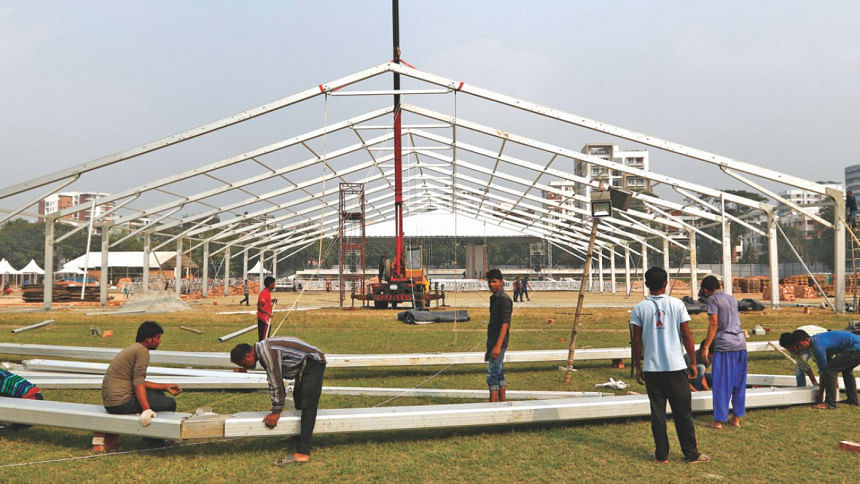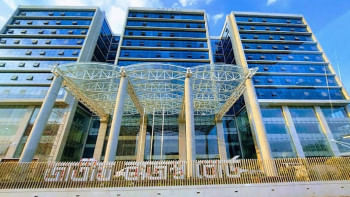A Tremendous Transformation

Classical music lovers of the country have gone through a bit of an emotional roller coaster in the last couple of months, surrounding their favourite event of the year. Since early October, anticipation had been building up to the Bengal Classical Music Festival's announcement, followed by heartbreak when its cancellation was announced. A glimmer of hope returned in mid-November when it was reported that the festival was back on, at a new venue. As the official announcement of the five-night extravaganza from December 26-30 came on December 10, excitement returned to their hearts, but with an air of apprehension: how would the Abahani grounds, part cricket field-part practice grounds for football, be able to handle the mammoth-scale festival in terms of the amenities and logistical convenience of the Army Stadium? The Daily Star looked to find the answer, visiting the field yesterday to see how exactly the Abahani grounds are being prepared. And the jury is out: It's going to be as good as it can get.
Starting off with the biggest question among festival regulars: the size of the venue -- Bengal Foundation Chair Abul Khair had informed at the press conference that the usable area of the ground is 3,60,000 square feet, a whole 100,000 square feet more than the Army Stadium. And looking at the half-completed arena, it sure looks like it's at no shortage of space. Although the Army Stadium had galleries which housed a lot of attendees in the past editions, for this ground the main seating area is extended by quite a bit using additional structures, along with the construction of a makeshift gallery at the far end of the ground.
To the stage right will be the food court, stretching along the length of the seating area, while the left side will house the stalls and exhibits of Bengal Foundation and festival partners. At the far back will be the media centre and some other logistical and security support units.
A 16-feet steel-plate wall is being erected along the boundaries of the entire field, to ensure security and to prevent outside sounds and distraction. There will be four main entrances, with the lines forming inside the field before the main festival area.
Another big concern for the audience was restrooms – and organisers have given it due importance. A 48-unit makeshift restroom is being set up at the back of the food court, with another set of porta-potties at the other corner presumably for the VIP area.
Large groups of people were seen working through the day at the field, from laying down bricks for the walking areas to erecting giant metal structures, setting up the stage, constructing the gallery, putting up the outer wall and setting up the tents for the food stalls. From huge cranes to small hammers and nails and everything in between have kept easily a few hundred people busy over the last few days, and will do until the curtain rises this Tuesday.
As someone who has spent a big part of their teenage afternoons at the Abahani grounds, the transformation of the ground looks quite hard to believe. Blues Communications, who have been managing the event for the last four years, have shown that with the right planning, determination and resources, they can move mountains.
Having said all that, this festival will be different from previous years. Tens of thousands of attendees have formed a sense of familiarity with the Army Stadium in the past five editions, as have the organisers. Being held in a residential area the traffic dynamics will be a little trickier, the relatively colder month of December will also play a part, but it's safe to say that no stone has been left unturned from the organisers' end to ensure that the festival is as enjoyable to the audience. The rest we'll know come December 26.

 For all latest news, follow The Daily Star's Google News channel.
For all latest news, follow The Daily Star's Google News channel. 



Comments